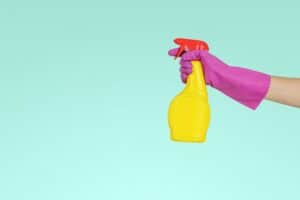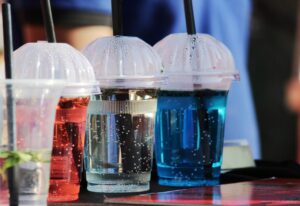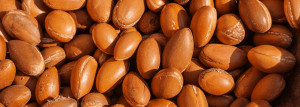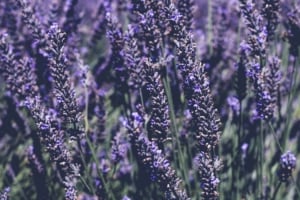The Dangers Of Phthalates In Shampoo Explained

Pronounced thal-ate, phthalates are a growing concern in the health community. Widespread use increases the concern, as many companies include phthalates in a range of products; from shower curtains to medicinal supplements.
Phthalates are linked to many different health problems, including adult infertility. Many healthcare professionals recognize it as a red flag, and toxicologists all put hazard tape around it.
What Are Phthalates?

Many household products contain phthalates
It seems clear that phthalates are an ingredient we should probably be wary of but what, exactly, are they? After all, if we aim to be educated consumers, shouldn’t we know where these ingredients come from and why we fear them?
The dictionary definition of a phthalate is simply a salt or ester of phthalic acid. It works as a plasticizer, which essentially lends durability, flexibility, and longevity to PVC (Polyvinyl Chloride) based products. For example, phthalates are added to your shower curtain so that it lasts longer. They can be literally in everything you use on a daily basis, from toys and glue to paint and food products.
Until recent changes, most companies manufactured their products with phthalates in them. As more and more studies come out showing the risks of long-term exposure to this chemical, phthalates are no longer a staple ingredient. Due to our growing awareness and concern, manufacturers are in the process of phasing phthalates out of the formulation process.
If Phthalates Are So Dangerous, How Are They Legal?
The U.S. Food and Drug Administration stated that as long as the company branded phthalates as an ingredient on the product label, they have the green light. Cosmetics include phthalates to enhance the texture or include in the fragrance, of the product. They’re actually illegal in California and some parts of Europe.

Phthalates are illegal in some regions.
Whereas the FDA doesn’t claim to have scientific proof of the health risks of phthalates, other sources uncovered the dangers of these chemicals. For example, studies have shown that women who use hairsprays that contain phthalates have more sons with genital mutations. The investigations showed that phthalates decreased both testosterone and sperm counts.
Many synthetic fragrances contain phthalates as one of their ingredients. However, here’s the problem: if a cosmetic label lists “fragrance” as an ingredient, the company doesn’t have to provide details about the chemicals that create the scent. The label doesn’t have to list “phthalates,” even if the product contains them for fragrance. Cosmetics, including shampoos and body washes, can include a fragrance which contains a variety of phthalates. Probably because they can get away with it.
That’s why it’s vital to stick to phthalate-free products. The only way to know for sure is to purchase a cosmetic which (a) does not list any phthalates in the ingredients, and (b) gets its aroma from natural ingredients, instead of synthetic fragrance.
Your body doesn’t deserve to take in harsh and hazardous synthetic chemicals. Health is your most valuable asset because longevity, vibrancy, and beauty all depend upon it. Stay true to good health and stay away from anything that contains phthalates, or ambiguous fragrances (which may contain phthalates).
Products That May Contain Phthalates To Look Out For
The Smell Can Tell
If it gives off a lovely fragrance that wasn’t acquired through natural ingredients, odds are the product contains phthalates (even if it doesn’t list them!). These subversive aromas can appear in perfumes, hairspray, deodorant, air freshener, laundry detergent, or shampoo. It feels nice to smell nice, but doing so naturally is so much more preferable for your bodily health, fertility, and children in the long run.
Plastics Are The Perps

Plastic sippy cups can contain phthalates.
Next time you catch a whiff of that lovely ‘new car’ smell, those are just phthalates. The chemicals appear in a wide range of products: carpeting, steering wheels, IV tubes, sex toys, shower curtains, raincoats, wire coatings, and nail polish. So many aspects of life are affected by this pervasive chemical, showing the versatility of phthalates in production processes. In response to public awareness about the dangers of phthalates, manufacturers are now phasing phthalates out of production.
Food With A ‘Tude
Food and water we consume often contain phthalates, although we don’t always know why or how. The fats in meats and cheeses attract high levels of this chemicals. Dairy products may receive their higher concentrations from the plastic tubing used to milk the cows. Tap water polluted by industrial waste shows high levels of phthalates, just like inorganic fruits and veggies due to the pesticides. Avoid these chemicals by buying organic, filtered, and steering clear from plastic.
Natural Ingredients To Look For In Shampoo
After reading about all the risks of exposure to phthalates, you may be freaking out. How can you get anything done without putting your health at risk? But no need to fret. Maple Holistics offers a wide variety of essential oil based shampoos and conditioners, as well as sturdy advice. Here are three natural ingredients you should look for in a shampoo to make healthy beauty decisions:
1. Argan Oil

Natural Argan Oil.
If you are into natural cosmetics, odds are you have heard of argan oil. Natives to Morocco have used argan oil to moisturize their skin and hair, and they even cook with this versatile oil. This natural ingredient is rich in vitamin E and other fatty acids that hydrate your innards, skin, and hair. If you are having issues with dry skin or brittle hair, argan oil may be exactly what the doctor ordered.
2. Tea Tree Oil
Tea tree oil also comes from a faraway land, but this time, Australia. The Aboriginal people of Australia have used tea tree oil for a variety of applications. For instance, the oil is well known for its anti-fungal and anti-bacterial properties. Tea tree oil works as an antiseptic as well. All these properties make tea tree oil one of the most versatile essential oils on the market. When used in shampoo or conditioner, it can clear away dandruff. This ingredient is ideal for those with sensitive skin who want to stay away from those nasty-smelling, tar-based dandruff shampoos.
3. Lavender Oil

Lavender flowers.
More than just a pretty, fuzzy, purple flower to liven up the flowerbed, the lavender essential oil is my absolute favorite oil. This flower not only yields many of the moisturizing and therapeutic properties of the other oils on this list but also gives off a scent that is absolutely magical. Lavender oil is used in everything, from candles to soaps and detergents because of its aroma. The scent is famous for inducing a sense of calm and relaxation. When used in shampoo, it leaves your hair smelling amazing and moisturized. If you haven’t yet tried this oil, what are you waiting for?!
Conclusion
Learning about the dangers of phthalates and their ubiquity can evoke fear and hopelessness. Instead of mourning future generations, meet companies’ phase-out process halfway. Most importantly, awareness is always the first step, and you’re already there! Next, read the ingredients of products you use carefully, and don’t assume the vague labels are good to go. Make moves to go organic with what you put in, on, and around your body. Everything you use and consume ought to be on your phthalates radar, from fruit to shampoo to plastic water bottles to your car’s dashboard. Don’t let it slide, pursue the best.
Thanks for the visit! To nourish your skin and hair best, check out our healthcare products here at Maple Holistics!

